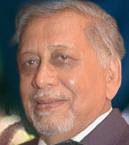As expected by us in our earlier article the Reserve Bank of India today raised its key short-term lending rate by 25 basis points and borrowing rate by 50 basis points to check rising prices. “Inflation remains the dominant concern in macroeconomic management”, RBI said while raising the repo (lending) and reverse repo (borrowing) rates to 6 per cent and 5 per cent, respectively. It is good that they admitted their concern. Now government of India should come out with their supply side stance to neutralize different voltile price level in different state.
The new rates of RBI, which comes into effect immediately, were announced as part of the first scheduled mid-quarterly review of the monetary policy. The latest hike, fifth in a row, this year, in key policy rates will make loan expensive .tis does not augur well for growth. Now there will be pressure on the scheduled banks to increase rates in near terms.
The hike in rates will lead to a rise in cost of funds for the banks and eventually makes loans expensive, which will reduce consumption.
While inflation for August was 8.5 per cent (as per the new series with 2004-05 as Base Year), food inflation was at a high of 15.10 per cent for the week ended September 4.
To check inflation, the RBI had raised these key rates by an identical margin.He said, "End-user demand will remain intact. Investors in residential and commercial premises will find lesser arbitrage opportunities as the cost of funding purchases becomes higher. Banks will revise housing loan rates upwards. As for funding to developers, this will not be seriously compromised apart from the cost of borrowing going up. Some of the well-known Economist feels that the central bank is close to take a pause in its rate-hiking cycle. "With monetary conditions tightening and global demand still sluggish, we retain our view that growth and inflation are likely to moderate in the coming quarters and that the RBI is close to pausing in its rate-hiking cycle," said an expert from Financial circle. This can be true.
Our friend, Indranil Sen Gupta, economist, said, "We continue to expect the RBI to pause after hiking the LAF reverse repo rate by 25bps on 2nd November with inflation peaking off - because inflation will likely come down to 7% by December and 5.7% by March 2011."
"The focus of RBI policy will need turn, sooner than later, to injecting liquidity to fund loan demand. After all, deposit growth, at 14.4%, is trailing 20% credit off-take at a time of a high 8.2% of gross domestic product (GDP) fiscal deficit and a 2.9% of GDP current account deficit," he added.
We feel that real interest rates were likely to turn positive in India in late Q4, when inflation subsides to 6% or below by December 2010. In such an environment we believe inflation is unlikely to be the sole criteria for deciding monetary policy, as the underlying objectives of the RBI would be achieved.
Containing spiralling inflation which is hovering at double digits has been the RBI's top agenda. However, some analysts were thinking that taking IIP numbers alone into account, which have been quite volatile of late and have been revised downwards, the central bank may like to wait at least until the next policy meet for a more clear picture to emerge on the IIP growth front.
While acknowledging that inflation remains the 'dominant' concern in policy management, the RBI said recent monetary actions have helped in generating early signs of a downturn in non-food manufacturing inflation. In its first ever mid-quarter policy review, the RBI has narrowed the corridor between repo and reverse repo rate to 100bps, indicating the central bank's desire to reduce volatility in the overnight call rate.
"We believe the Reserve Bank has finished raising the repo rate, but has left a small window open for further action on the reverse repo rate, especially given the priority of narrowing the corridor. Ramanathan K, chief investment officer, ING Investment Management India, said, "The 50bps hike in the reverse repo rate should not be construed as hawkish aggression given that we are moving into the busy season where liquidity would continue to be tight. The rate changes from now on will depend on evolving macroeconomic conditions - both domestic and global."
. Though the RBI had raised the two key policy rates, it kept the bank rate, cash reserve ratio (the portion of deposits that banks are required to keep with the central bank) and statutory liquidity ratio or SLR, the portion of deposits that banks have to park in government securities, unchanged.
--------------------------------------------------------------------------
blogcatalog
Subscribe to:
Post Comments (Atom)





No comments:
Post a Comment